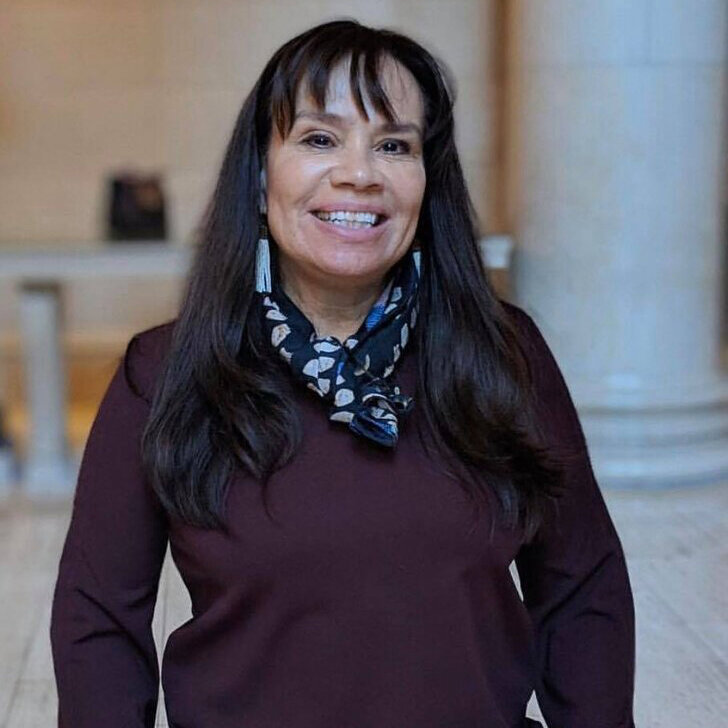It’s easy for anyone to get stuck in old habits, but grantmakers are particularly susceptible to “that’s the way we’ve always done it” reasoning. There often aren’t outside markets forces or broader power structures to force change. For grantmaking organizations, the inspiration and drive to evolve must come from within.
Though finding the time and resources to innovate can be tough, it’s worth doing. Grantmakers need to continue to evolve if they want to improve equity, center the communities they serve, build programs for the long term, and make a lasting impact. This work takes intention, strategy, and a willingness to transform when necessary.
For some inspiration, we’ve highlighted six examples of how some funders have reimagined what it means to be a grantmaker.
Let’s dig in.
1. Seeking community feedback to set priorities
When Brenda Solorzano and her team at the Headwaters Foundation in Western Montana looked to set direction for the organization, they went a different route than many funders usually go.

Often foundations will hire a consultant to scan the landscape and complete an assessment to determine community needs. If community members are involved, it’s usually at the end of the process, to give feedback on a narrow set of options. For the most part, the foundation leadership and staff have the final say.
However, Solorzano and her team wanted to center the community perspective right from the beginning. They skipped hiring a consultant and instead went straight to community members themselves.
What did this look like in practice? The foundation team went out into the community.
“We talked to everyone from high schoolers to hospital CEOs and everybody in between,” Solorzano says.
At the end of each conversation, they asked who else they should talk to. In the end, they chatted with almost 600 people.
We talked to everyone from high schoolers to hospital CEOs and everybody in between.
Brenda Solorzano, CEO of Headwaters Foundation
Through these conversations, the foundation staff started to see some consistent themes. To narrow their focus, they decided to seek another round of community feedback. They hosted meetings in every county they serve. The meetings were open to the public and everyone was encouraged to attend. Here, the foundation staff presented their findings from the conversations they’d had. Then they turned it over to the community members to determine which were the highest priority issues.
In almost every community meeting, the consensus was early childhood development.
“People said that’s the greatest opportunity for this foundation to have a long-term impact on communities across Western Montana,” Solorzano says. “So that became what we focused on.”

2. Building a listening practice
Because of the inherent power imbalances in the funder/grantee relationship, it’s essential for funders to formalize channels for community feedback. Without that structure, it’s easy for the conversation to become very one-sided.

“Our approach at Brooklyn Community Foundation always starts with listening,” Marcella Tillett explains. “Not only does this develop an open line of communication with our communities, it creates the space for more people to enter the conversation.”
Brooklyn Community Foundation formalized their listening practice in 2014, launching Brooklyn Insights. This allows the foundation to set priorities based on community members’ lived experiences instead of outside values or inaccurate assumptions.
For the foundation team, the work doesn’t stop at listening.
“We’re not just listening to hear, but listening to take direction,” Tillett says.
These conversations direct how BCF prioritizes resources for grantmaking, as well as determines how they engage with the media, what issues they highlight, and how they shape their capacity-building strategies.
We’re not just listening to hear, but listening to take direction.
Marcella Tillett, VP of Programs and Partnerships at Brooklyn Community Foundation
Brooklyn Community Foundation applies a racial justice lens to its work. This shapes who they seek feedback from. It’s not about trying to listen to everyone.
“We want to hear from people experiencing harm as a result of systemic injustice and oppression,” Tillett explains.
Learn how to improve equity in your grantmaking
Watch our webinar with Kari Aanestad, co-founder of the #FixTheForm movement.
3. Understanding community ecosystems
For funders, it’s important to understand communities on their own terms. If you are making assumptions and imposing your values, you’re probably not building your programs around what the community really needs.
Lori Pourier of First Peoples Fund recommends making an effort to learn about the communities you serve. She calls it “a process of letting go of what you think you know.”

History is a huge component of this work. You want to know what experiences and forces have shaped the community, from an inside perspective. You also want to have a sense of what their past relationships with institutions have been like. If many community members have had negative experiences with institutions like yours, you’ll likely need to address that in order to build trust.
Part of this education is recognizing the ecosystems that already exist within the community. Don’t overlook informal economies and relationships. Rather than just focusing on the problems within a community, identify the good things already happening and seek to support them.
In her role, Pourier has worked to invite people into tribal communities so they can understand those positive forces that are at play.
“We take time to bring the folks who are interested into communities to look at the good things that are happening that might not be connected to federal support systems—those pockets of good things that people would never know or hear about,” she says.
We take time to bring the folks who are interested into communities to look at the good things that are happening that might not be connected to federal support systems.
Lori Pourier, President and CEO of First Peoples Fund
Doing this work allows you to honor the full identities of the people you serve. You get a clearer understanding of how their needs intersect and you can shape your support around their lived experiences.

4. Providing rest and rejuvenation to nonprofit leaders
It’s no secret that nonprofit staff are often asked to do too much. Many are underpaid and under-resourced. Unfortunately this has become an accepted way of doing things for a lot of nonprofits, but it’s not good for the people, the organization, or the community at large.

Carrie Avery of the Durfee Foundation is working to reframe this approach.
“To work at a nonprofit doesn’t mean you have to work until you burn out—that isn’t sustainable,” she says.
Dedicating resources to give nonprofit leaders time for rest and rejuvenation is good for everyone. Not only does it help retain good leaders, but it also gives others a chance to develop new skills, and provides an opportunity to reimagine processes and responsibilities. In short, it’s a great investment.
But what does it look like in practice? For the Durfee Foundation it’s a sabbatical program for organization leaders.
“It’s building in a culture of care and a normalization that people need rest and renewal,” Avery says.
It’s building a culture of care and a normalization that people need rest and renewal.
Carrie Avery, President of the Durfee Foundation
Through its sabbatical program, the Durfee Foundation offers organizations $60,000 to support an extended break for an accomplished leader. Interim leadership for the organization must come from within, which means that other nonprofit staff members spend the sabbatical developing their leadership skills.
This model has had incredible outcomes. It allows leaders to avoid burnout—they return to their positions refreshed and with energy to innovate and think long term. Plus the break helps the whole organization acknowledge that rest has value, creating healthier work culture and making it easier to attract and retain talented people.
Be a more effective grantmaker
Submittable can help you streamline your processes and make a deeper impact
5. Acknowledging harm
For funders, it can sometimes be difficult to understand that even with good intentions, funder/grantee relationships can have negative impacts on individuals and the community. There are inherent power imbalances and opposing perspectives, but leaning into those hard truths helps make the space for repair.
Marcella Tillett of the Brooklyn Community Foundation explains: “In these relationships, harm happens—we’re going to acknowledge that.”
In these relationships, harm happens—we’re going to acknowledge that.
Marcella Tillet, VP of Programs and Partnerships at Brooklyn Community Foundation
It’s important to build an honest relationship with grantees and give them the chance to share their perspectives freely. One way the team at the Brooklyn Community Foundation has done this, is they ask, “In what ways do we show up that are harmful?”
Notice that it’s not “Do we show up in ways that are harmful?” There is inherent pressure in that question for grantees to respond positively. But when a funder acknowledges that harm happens, it opens up the door for honest discussion.
“It’s a way to shift power because you’re asking the person or organization you’re in a relationship with to actively continue to create what the bounds of that relationship are,” Tillett says.
For example, open and honest conversations with the community helped Brooklyn Community Foundation formalize their participatory grantmaking. Community members are involved in setting priorities and deciding how resources are distributed.
“We really try to be a partnership of equals,” Tillett says.

6. Reducing the red tape
If you have a complex and time-consuming grant application, you’re likely burdening your grantees and pulling them away from their community work. Finding ways to cut down the red tape can help them fulfill their missions and do more good.
What does this look like in action?
For the Headwaters Foundation team, it meant reimagining the grant approval process. Rather than a long, drawn-out application and then weeks or months for review, the team streamlined their work as much as possible
Instead of looking for reasons to not support an organization, the foundation team treats the application process as a quick way to check if missions align.
“If you’re mission-aligned, we should be supporting you,” Brenda Solorzano says.
You can also look for ways to shift some of the burden from your grantees to your own staff. At the Headwaters Foundation, rather than having grantees fill out the application, the team has the option to meet with a nonprofit and then fill out the application for them. Rather than doing the work, the grantee can just provide approval or make changes to the grant agreement the foundation team has created.
The stories we’ve collected of the work that’s being done with this grant money—it’s transformational in many of these communities.
Brenda Solorzano, CEO of Headwaters Foundation
Taking the administrative burden off of grantees not only frees them up to do more work in the community, but it ensures that as a funder, you’re supporting more equitable outcomes. If your application process is long and complex, only the nonprofits with enough resources and personnel to dedicate to those processes will be able to apply.
The Headwaters Foundation has seen this play out in their work.
“The stories we’ve collected of the work that’s being done with this grant money—it’s transformational in many of these communities,” Solorzano says. “And these are communities that don’t have big infrastructure, don’t have large nonprofits, don’t have development people. They’re the kind of people who wouldn’t be as competitive in a traditional application process.”
The right tools to support your evolution
As you look to adapt your practices to better meet community needs, you want to leverage tools that will help you advance equity, build relationships, and understand the impact of your work. Submittable is grant management software designed to help you launch, manage, and measure your grantmaking program. Find out more today.